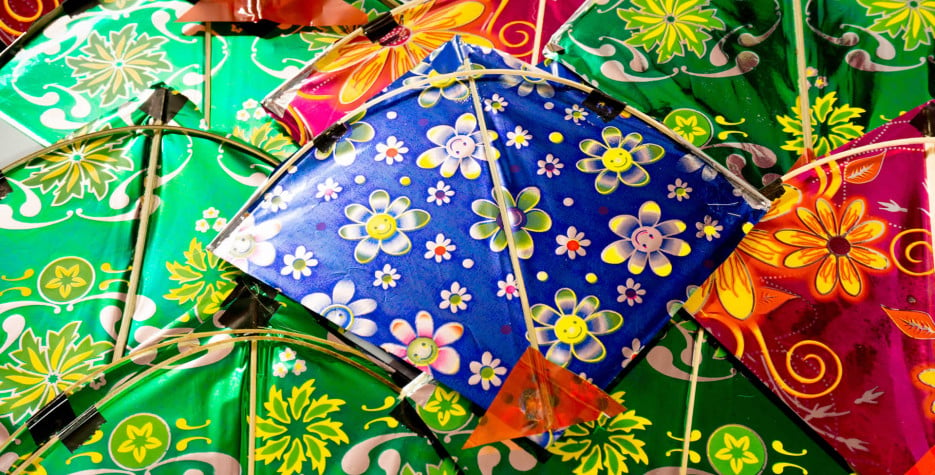When is Makar Sankranti?
This is a popular Hindu festival that occurs on or around January 14th across India.
The day is known by various names and there is a variety of different customs observed in the different Indian states.
Despite these variations, it is a harvest and thanksgiving festival marking the start of spring, the end of the traditional farming season and the gathering of the first food from the harvest.
It is unique among Hindu festivals as the date is based on a solar calendar rather than the phases of the moon. This means it falls on January 14th in the western calendar.
This date marks the start of Uttarayana, the time when the sun starts to move northwards after the winter equinox.
This date is now actually December 21st in the Western Calendar, but as the equinoxes move by 50 seconds each year due to the wobble of the Earth's axis.
This shows the ancient age of this festival - a thousand years ago, the festival was on December 31st.
Uttarayana is also considered a time of good fortune and important events are scheduled during this period.
Celebrations across India
Maharashtra, Gujarat
Here the day is known as Makar Sankranti. Makara Sankranthi refers to the event of the Sun entering the zodiac sign of Makara or Capricorn, marking the start of its northward journey. It is a festival of the young and the old.
In Ahmedabad in Gujarat, a large part of the celebration is the International Kite Festival. The skies are filled with kites, and kite makers come from many other cities to make and fly multicoloured kites in all design and sizes. At night, kites with paper lamps filling the sky with light.
Tamil Nadu, Andhra Pradesh, Karnataka
The festival is celebrated for up to four days and is known as Pongal.
The harvest festival is known as Pongal and lasts for three days.
In Andhra Pradesh, the first day is known as Bhogi, and it is a day of cleaning and cleansing; old clothes are thrown away, marking the start of new life.
The second day is known as Pongal day. This is the key day for celebrations and holidays in many states. To mark a good harvest, milk or rice is cooked until they boil over - 'Pongal' means 'it boils'. The food is offered to the gods (including the sun or rain gods, depending on the region's climate) before people eat it to cleanse themselves of past sins.
The third day is Mattu Pongal (festival of the cow). It is a day to offer thanks to the village cows and oxen, who played a key role in the season's farming as they are used to plough the land. The cows and oxen are bathed, decorated with garlands and worshipped.
The fourth day is known as Kanum Pongal or Kanyapongal. In Tamil Nadu, it may be called Uzhavar Tirunal. This is a day to thank family and friends who have helped in the farming season and the harvest.
In southern India, all three or four days of Pongal are considered important. Southern Indians who have settled in the north will usually celebrate the second day. As it coincides with Makara Sankranti in the north, it may also be called Pongal Sankranti.
Punjab
The festival is called Lohri. December and January is winter in Punjab and bonfires are lit on the eve of Sankranti. Sweets, sugarcane and rice are thrown on the bonfires and friends and relatives gather together.
Uttar Pradesh
The period is celebrated as Kicheri. An important tradition on this day is to have a bath and masses of people can be seen bathing in the Sangam at Prayagraj where the rivers Ganga, Jamuna and Saraswathi flow together.


